WHY I created sample swatches of colours for laser cutting
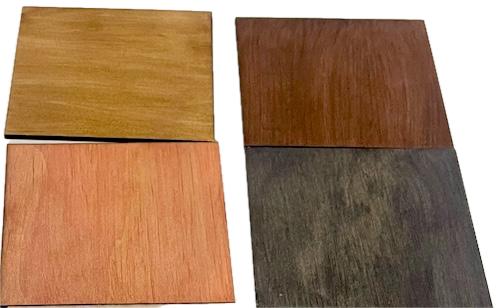
Choosing the right colour for a project can be a daunting task, especially when you’re trying to recall shades and finishes from memory. This was my motivation for creating sample swatches of all the colours I use for laser cutting projects, including wood stains, dyes, paints, and acrylic pens. With physical samples on hand, I can easily match colour combinations to suit the specific aesthetic of each project. It also saves me time. Having swatches readily available simplifies decision-making and lets me explore colour combinations that might not have come to mind without seeing them side by side.
HOW I created sample swatches of colours for laser cutting
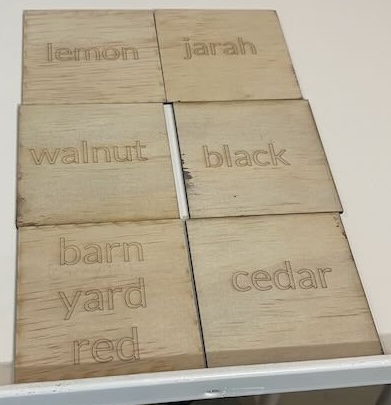
The process of creating colour swatches is simple but effective. For every shade of wood stain, dye, paint, and spray paint in my collection, I cut out 10×10 cm squares of plywood. On the back of each square, I score the name of the colour using the laser cutter, so it’s easy to identify.
Next, I apply the respective colour—whether it’s a wood stain, dye, or paint—on the front of the swatch, ensuring an even and accurate representation of the colour. After letting the colour dry, I protect the surface with a clear acrylic gloss spray to seal and preserve the finish.
For acrylic pens, I use a slightly different approach by placing three colours on a single swatch. This allows me to see how different shades from the same pen set interact with one another. Once all the swatches are complete, I organise them by colour type, grouping all wood stains, all dyes together, and so on. I store them in a labelled container for easy access whenever I start a new project.
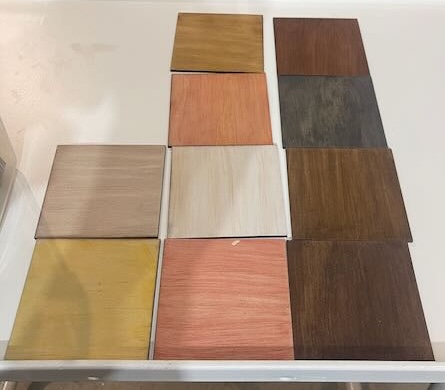
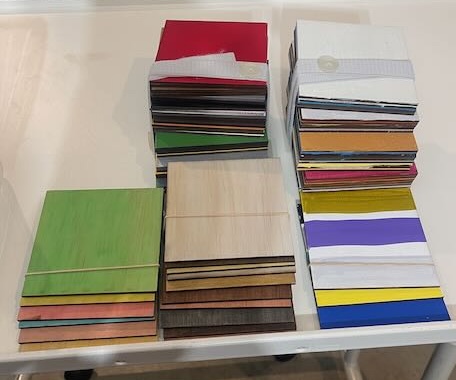
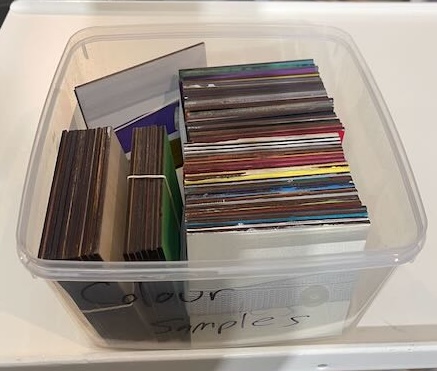
Please take a look at my laser cutting projects, which provide download links to the files, tips, and photos of my completed items. For other projects, check out free design libraries like Thingiverse, Ponoko, or 3Axis.